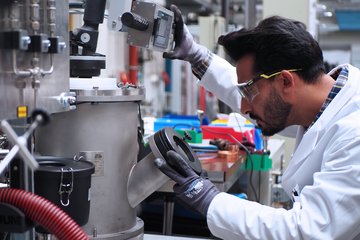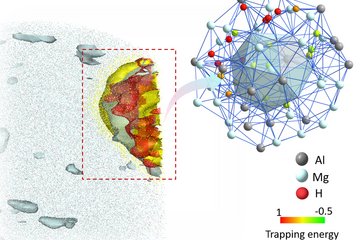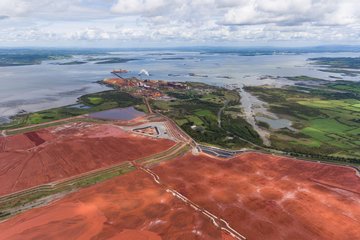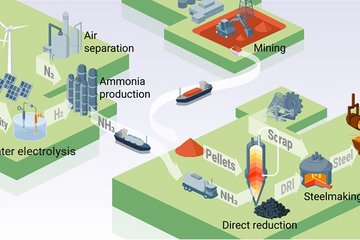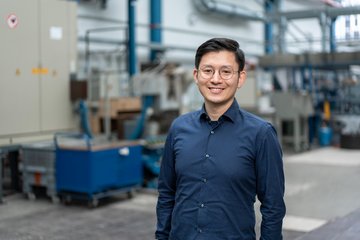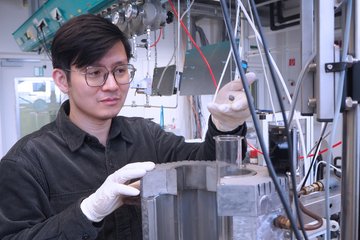Alle Typen
481.
Zeitschriftenartikel
Atomic scale investigation of non-equilibrium segregation of boron in a quenched Mo-free martensitic steel. Ultramicroscopy 159, S. 240 - 247 (2015)
482.
Zeitschriftenartikel
Atomic scale study of CU clustering and pseudo-homogeneous Fe-Si nanocrystallization in soft magnetic FeSiNbB(CU) alloys. Ultramicroscopy 159 (2), S. 285 - 291 (2015)
483.
Zeitschriftenartikel
Grain boundary segregation in multicrystalline silicon: correlative characterization by EBSD, EBIC, and atom probe tomography. Progress in Photovoltaics: Research and Applications 23 (12), S. 1742 - 1753 (2015)
484.
Zeitschriftenartikel
Dynamic strain-induced transformation: An atomic scale investigation. Scripta Materialia 109, S. 23 - 27 (2015)
485.
Zeitschriftenartikel
Autonomous Repair Mechanism of Creep Damage in Fe–Au and Fe–Au–B–N Alloys. Metallurgical and Materials Transactions a-Physical Metallurgy and Materials Science 46 (12), S. 5656 - 5670 (2015)
486.
Zeitschriftenartikel
Non-equiatomic high entropy alloys: Approach towards rapid alloy screening and property-oriented design. Materials Science and Engineering A: Structural Materials Properties Microstructure and Processing 648, S. 183 - 192 (2015)
487.
Zeitschriftenartikel
Deformation mechanism of ω-enriched Ti–Nb-based gum metal: Dislocation channeling and deformation induced ω–β transformation. Acta Materialia 100, 12375, S. 290 - 300 (2015)
488.
Zeitschriftenartikel
Analytical bounds of in-plane Young’s modulus and full-field simulations of two-dimensional monocrystalline stochastic honeycomb structures. Computational Materials Science 109, S. 323 - 329 (2015)
489.
Zeitschriftenartikel
Ab initio thermodynamics of the CoCrFeMnNi high entropy alloy: Importance of entropy contributions beyond the configurational one. Acta Materialia 100, S. 90 - 97 (2015)
490.
Zeitschriftenartikel
The influence of stacking fault energy on the microstructural and strainhardening evolution of Fe–Mn–Al–Si steels during tensile deformation. Acta Materialia 100, S. 178 - 190 (2015)
491.
Zeitschriftenartikel
Relationship Between Damping Capacity and Variations of Vacancies Concentration and Segregation of Carbon Atom in an Fe–Mn Alloy. Metallurgical and Materials Transactions a-Physical Metallurgy and Materials Science 46A (11), S. 4828 - 4833 (2015)
492.
Zeitschriftenartikel
Assessment of geometrically necessary dislocation levels derived by 3D EBSD. Acta Materialia 99, S. 402 - 414 (2015)
493.
Zeitschriftenartikel
Size and orientation effects in partial dislocation-mediated deformation of twinning-induced plasticity steel micro-pillars. Acta Materialia 98, 12304, S. 391 - 404 (2015)
494.
Zeitschriftenartikel
Phase stability of non-equiatomic CoCrFeMnNi high entropy alloys. Acta Materialia 98, S. 288 - 296 (2015)
495.
Zeitschriftenartikel
Quantitative chemical-structure evaluation using atom probe tomography: Short-range order analysis of Fe–Al. Ultramicroscopy 157, S. 12 - 20 (2015)
496.
Zeitschriftenartikel
From High-Entropy Alloys to High-Entropy Steels. Steel Research International 86 (10), S. 1127 - 1138 (2015)
497.
Zeitschriftenartikel
Rapid theory-guided prototyping of ductile Mg alloys: from binary to multi-component materials. New Journal of Physics 17 (9), 093009 (2015)
498.
Zeitschriftenartikel
Microstructure design and mechanical properties in a near-a Ti–4Mo alloy. Acta Materialia 97, S. 291 - 304 (2015)
499.
Zeitschriftenartikel
Linear complexions: Confined chemical and structural states at dislocations. Science 349 (6252), S. 1080 - 1083 (2015)
500.
Zeitschriftenartikel
Synergy of atom-probe structural data and quantum-mechanical calculations in a theory-guided design of extreme-stiffness superlattices containing metastable phases. New Journal of Physics 17 (9), 093004 (2015)
